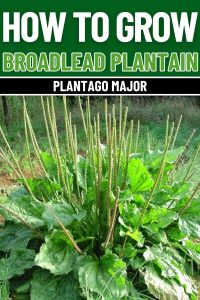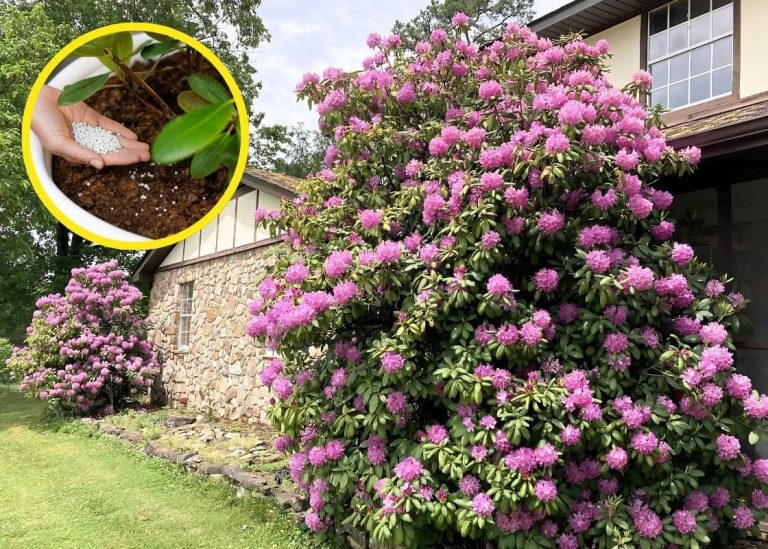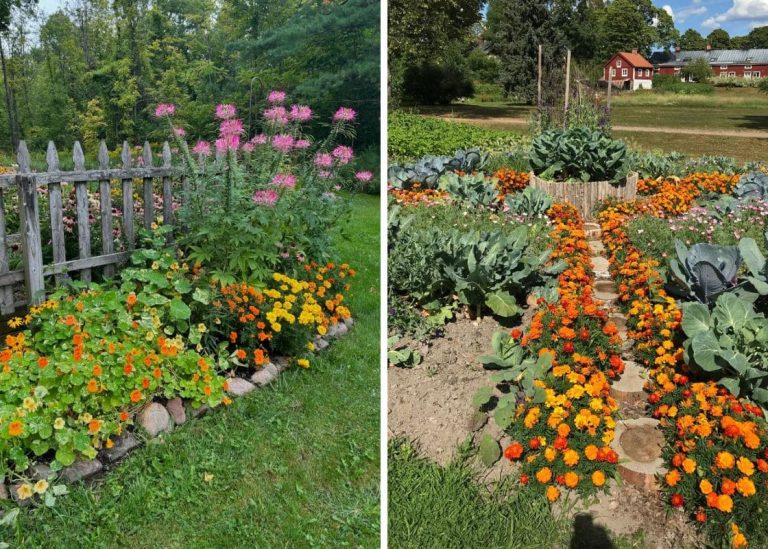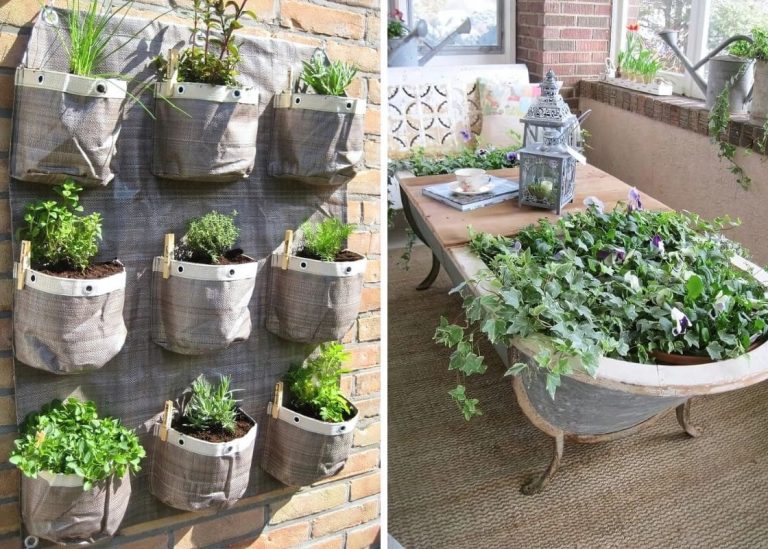How to Grow Broadleaf Plantain (And Why Every Gardener Should)
Our youngest had tumbled off the garden bench—nothing dramatic, just a scraped knee and a sudden flood of tears. I reached for the bandages in the kitchen, but paused. A patch of green near the compost bin caught my eye—broad, ribbed leaves that always seemed to grow where no one asked them to. My grandmother used to call them “nature’s medicine.”
With a bit of hesitance and a lot of curiosity, I picked one, gave it a gentle chew like she once taught me, and pressed it onto the scrape. Within minutes, the sting eased, and his crying slowed. I remember the way he looked up at me, a bit confused, then calm, like something quiet and ancient had just passed between us.
That evening, after the kids were in bed, I sat on the porch with a warm cup of lemon balm tea and thought about all the plants I’d overlooked over the years—how many had gifts I never bothered to learn? Broadleaf plantain wasn’t just useful. It felt wise, steady. It had been here the whole time, waiting.
Now, I keep a small patch growing just outside the back door. It’s not glamorous. It doesn’t bloom in showy colors or twist itself into elegant vines. But it has earned its place in our lives—and I’d love to show you how to grow it, use it, and maybe fall in love with it like I did.
What Makes Broadleaf Plantain Special?
Broadleaf plantain (Plantago major) isn’t here to impress you with color or fragrance. But give it a little attention, and it’ll quietly become one of the most valuable plants in your garden.
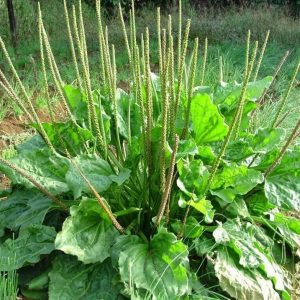
Here’s what makes it special:
-
Grows well in compacted, poor, or ignored soil
-
Tolerates foot traffic—perfect for walkways and play areas
-
Provides natural first aid: anti-inflammatory, antibacterial, skin-soothing
-
Completely edible and supports digestion
-
Lives happily with minimal care
I’ve heard gardeners call it a “green bandage,” “earth healer,” or simply “the plant that keeps showing up for you.” They’re all right.
Growing Conditions: What Broadleaf Plantain Needs
Plantain isn’t fussy, but if you treat it with a little care, it rewards you with more leaves, stronger roots, and richer healing properties. Here’s what I’ve learned from growing it across various patches in our backyard and from stories shared by other home gardeners.
1. Soil Requirements
It will grow in clay, gravel, or poor topsoil. But if you’d like those leaves lush and broad (perfect for poultices or dinner greens), plant in loamy, well-draining soil enriched with compost. A neutral pH between 5.5 and 7.0 works best.
2. Sunlight Needs
Partial shade brings out larger, tender leaves. Full sun makes it tougher and smaller, but still potent. I grow mine beside the beans, where it gets dappled morning sun and a little shade by afternoon.
3. Watering
Rain is usually enough. But during dry spells, I give it a light soak once a week. If you’re harvesting regularly, keeping the soil lightly moist helps it bounce back faster.
4. Temperature and Climate
It’s a hardy perennial in USDA zones 3 to 9. I’ve watched it push through frost and reseed itself after heatwaves. Like a true survivor, it never sulks.
How to Grow Broadleaf Plantain From Seed
1. Sowing Seeds
In early spring or fall, scatter the tiny seeds directly onto the soil surface. Since they need light to germinate, don’t cover them with soil—just press them gently into the ground.
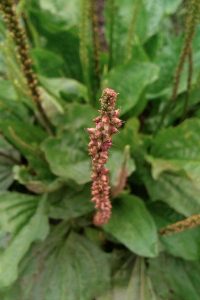
2. Germination
Broadleaf plantain seeds typically germinate in 7-14 days, but this depends on temperature and moisture levels. Keep the soil consistently damp until seedlings emerge.
3. Transplanting (If Needed)
If you start plantain indoors or in a nursery bed, transplant the seedlings once they have a few true leaves. Space them 6–12 inches apart for optimal growth.
Caring for Broadleaf Plantain
One of the best things about growing broadleaf plantain is that it requires almost no maintenance. However, if you want to encourage vigorous growth, a little care goes a long way.
- Weeding: Plantain outcompetes most weeds, but removing aggressive competitors nearby will give it more space.
- Fertilizing: It grows well without fertilizer, but adding compost or diluted organic fertilizer once or twice per season can improve leaf production.
- Mulching: A thin layer of mulch around plants can help retain moisture and reduce competition from other plants.
One spring, I mulched with leaf litter from our oak trees—and the plantain patch loved it. The leaves were greener, broader, and almost twice as abundant.
Harvesting Broadleaf Plantain
I still find something deeply grounding about harvesting plantain by hand.

-
Young Leaves: Best for eating—snip them early in the morning when they’re most tender. Add them to omelets, soups, or sauté them like spinach.
-
Mature Leaves: These go straight into my drying basket for teas or salves.
-
Flower Stalks: Leave them until they dry out, then shake the seeds into a paper bag. Use the seeds for future planting—or grind them for fiber supplements like psyllium.
One tip I learned from a local herbalist: pick after a light rain. The leaves are clean, supple, and somehow more fragrant.
How to Use Broadleaf Plantain

Now that you’re growing your own broadleaf plantain, here’s how you can put it to good use:
- As a Food: The leaves can be eaten raw, sautéed, or boiled in soups and stews. The seeds can be ground into flour or used like psyllium for digestive health.
- For Medicinal Uses: Fresh leaves can be crushed and applied to insect bites, cuts, and rashes for instant relief. You can also dry them for herbal teas or make a homemade salve.
- For Soil Improvement: Broadleaf plantain helps loosen compacted soil and enriches it with organic ma.0tter as the leaves decompose.
Three Practical Ways I Use Broadleaf Plantain (and You Can Too)
1. As First Aid in the Garden
Whether it’s a bee sting or nettle burn, I just crush a fresh leaf and press it to the skin. It cools almost instantly. I once made a little poultice with plantain, calendula, and honey—it worked better than any store-bought salve on a thorn scratch.
2. In My Kitchen
Young leaves go into stir-fry, omelets, or herb butter. The taste? A little earthy, a bit like spinach, but with a peppery edge when mature. Seeds add bulk and fiber to smoothies or morning granola.
3. For the Soil
Let it grow wild in neglected beds. As leaves decompose, they improve soil texture and return minerals to the earth. I often grow it alongside carrots—it seems to make the soil looser and easier to work with.
Final Thoughts: From Weedy Nuisance to Garden Companion
Broadleaf plantain doesn’t ask to be admired, it just shows up when you need it. And once you understand it, you won’t look at your garden—or even the cracks in your sidewalk—the same way again.
If you’ve ever doubted whether you’re a good enough gardener, I invite you to start with plantain. No rules. No fear. Just a patch of earth and a willingness to notice what grows there.
Let me know how it goes. I’d love to hear your stories—maybe even share a few more of mine. Shall we grow something beautiful together?
